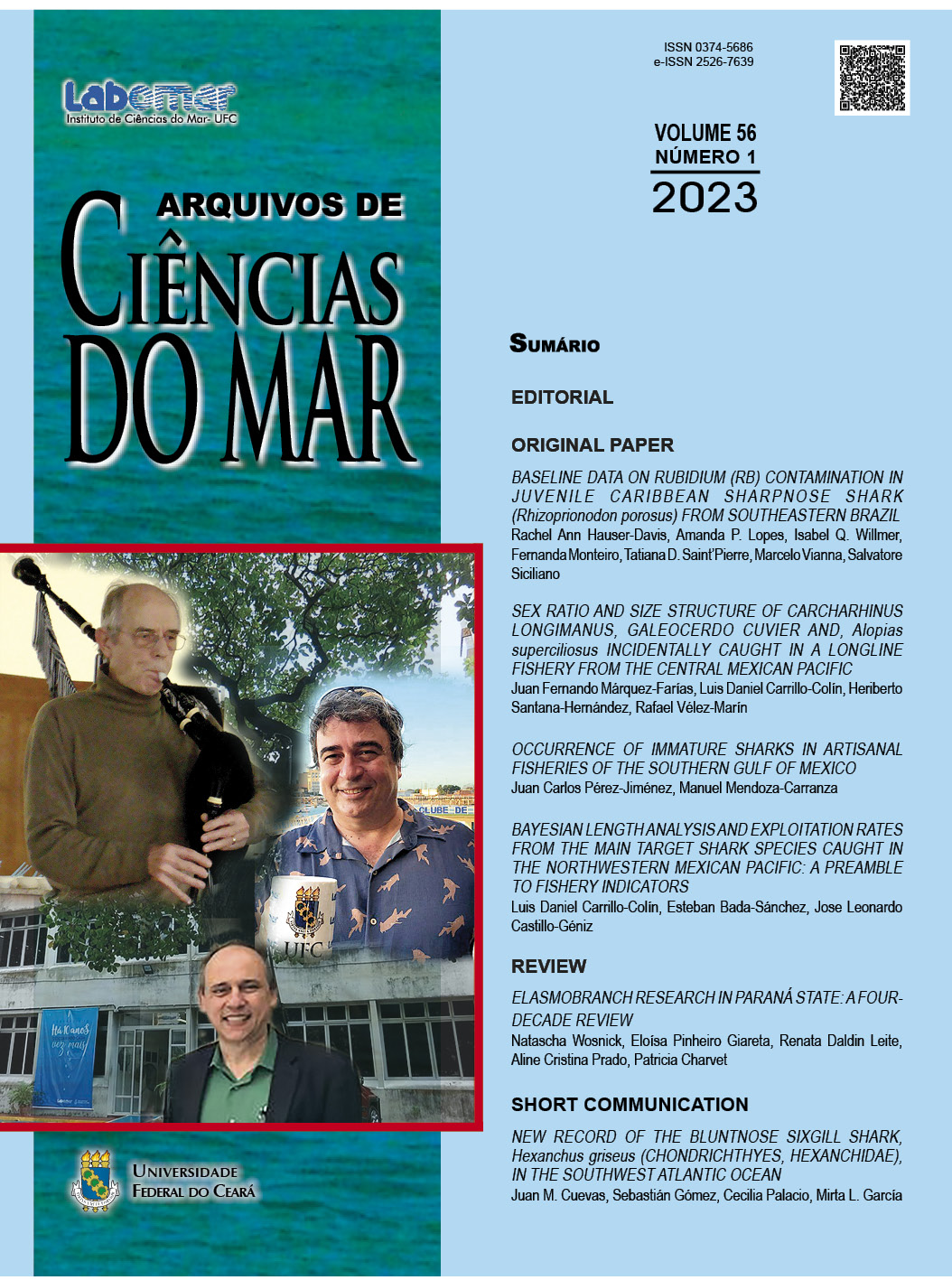ELASMOBRANCH RESEARCH IN PARANÁ STATE: A FOUR-DECADE REVIEW
Pesquisa com elasmobrânquios no estado do Paraná: Uma revisão de quatro décadas
DOI:
https://doi.org/10.32360/acmar.v56i1.82864Resumen
Abstract
The present study diagnosed the state of the art of elasmobranch research in the State of Paraná, Southern Brazil. Through a systematic literature review, 220 studies with elasmobranchs in the State were retrieved. Studies began in the 1980s, reaching a peak between 2010 and 2019. When the publication categories were considered separately, a predominance of peer-reviewed papers was noted. However, when grouping grey literature categories, this type of document was predominant, indicating that many of the investigations carried out were neither peer-reviewed, nor published in indexed databases. The most representative research areas were fisheries (18%) and feeding (13%). A total of 75 species belonging to 40 genera were investigated, with most studies focused on Carcharhinus spp. (n = 60), Sphyrna spp. (n = 40), Pseudobatos spp. (n = 35), and Zapteryx
brevirostris (n = 29). Some research trends in Paraná were like those identified for both South American and global scenarios, namely feeding ecology and fisheries. Nevertheless, some research areas that are key to be considered for adequate elasmobranch management and conservation measures were systematically neglected or remained underdeveloped in the State. Furthermore, for most species (e.g., Galeocerdo cuvier, Rhizoprionodon spp., Squatina spp., Narcine brasiliensis, Hypanus guttatus), information on basic biology and ecology are still lacking, indicating the need for future studies focusing on generating data for this important global elasmobranch conservation hotspot.
Keywords: rays, sharks, studies, priorities, Southern Brazil.
Descargas
Publicado
Número
Sección
Licencia
Derechos de autor 2023 Arquivos de Ciências do Mar

Esta obra está bajo una licencia internacional Creative Commons Atribución 4.0.
1. Proposta de Política para Periódicos de Acesso Livre
Autores que publicam nesta revista concordam com os seguintes termos:
- Autores mantém os direitos autorais e concedem à revista o direito de primeira publicação, com o trabalho simultaneamente licenciado sob a Licença Creative Commons Attribution que permite o compartilhamento do trabalho com reconhecimento da autoria e publicação inicial nesta revista.
- Autores têm autorização para assumir contratos adicionais separadamente, para distribuição não-exclusiva da versão do trabalho publicada nesta revista (ex.: publicar em repositório institucional ou como capítulo de livro), com reconhecimento de autoria e publicação inicial nesta revista.
- Autores têm permissão e são estimulados a publicar e distribuir seu trabalho online (ex.: em repositórios institucionais ou na sua página pessoal) a qualquer ponto antes ou durante o processo editorial, já que isso pode gerar alterações produtivas, bem como aumentar o impacto e a citação do trabalho publicado (Veja O Efeito do Acesso Livre).

